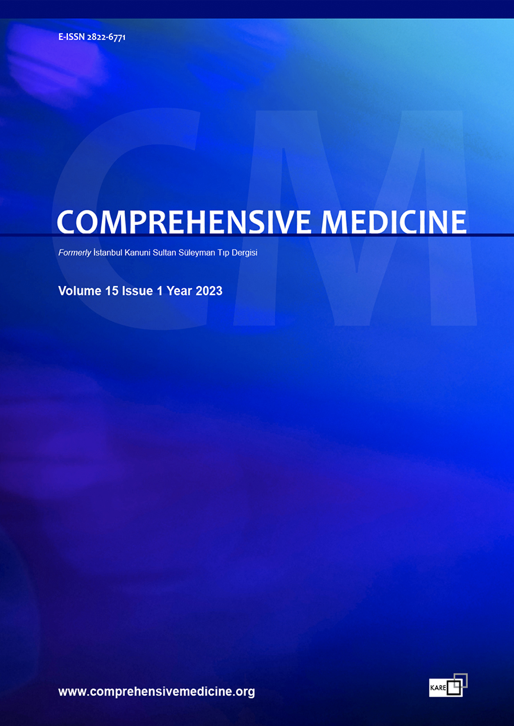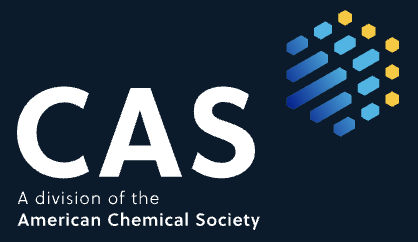Prevalence and Antimicrobial Susceptibility of Enterococcus Faecalis and Enterococcus Faecium Grown in Adult Intensive Care Patients Blood Cultures
Kamuran Şanlı1, Selen Zeliha Mart Kömürcü2, Ayça Sultan Şahin31Health Sciences University, Başakşehir Şehir Çam and Sakura City Hospital, Clinic of Medical Microbiology, İstanbul, Türkiye2Health Sciences University, Kanuni Sultan Süleyman Training and Research Hospital, Medical Microbiology Clinic, Istanbul, Türkiye
3Health Sciences University, Kanuni Sultan Süleyman Training and Research Hospital, Department of Anesthesia and Reanimation, Istanbul, Türkiye
INTRODUCTION: The aim of this study was to investigate the incidence and antibiotic resistance properties of E. faecalis and E. faecium, two Enterococcus species grown in the blood culture of adult patients treated in the intensive care unit.
METHODS: In this cross-sectional retrospective study, antibiotic resistance properties of enterococci strains grown in the blood cultures of patients treated in the adult intensive care unit of Kanuni Sultan Süleyman Training and Research Hospital between 2016-2019 were investigated. Blood cultures sent to our laboratory were incubated in the BACTEC-FX automatic blood culture (BectonDickinson, USA) device. All strains were identified at the species level, using the VITEK 2 (bioMerieux, France) method. Antimicrobial susceptibility tests of the identified strains were performed according to the recommendations of the European Committee on Antimicrobial Susceptibility Testing (EUCAST).
RESULTS: Of the strains grown in the blood cultures of 246 cases evaluated in the study, 137 (55.6%) were E. faecalis and 109 (44.4%) were E. faecium. Antibiotics to which E. faecalis showed the greatest frequency of resistance were streptomycin (40.9%), gentamicin (39.4%), ampicillin (8%) and amoxicillin/clavulanate (7.3%), respectively. Antibiotics to which E. faecium showed the most resistance were amoxicillin/clavulanate (89%), ampicillin (87.2%), gentamicin (74.3%), and streptomycin (71.6%), respectively. For both E. faecalis and E. faecium, it was determined that linezolid was the antibiotic with the least frequency of resistance development.
DISCUSSION AND CONCLUSION: The present study showed that E. faecalis and E. faecium strains grown in the blood cultures of adult patients treated in the intensive care unit demonstrated a high frequency of resistance against streptomycin, ampicillin and amoxicillin/clavulanate. It was thought that it would be beneficial to apply antibiograms and select antibiotics according to sensitivity, or to initiate treatment according to these data when administering empirical treatments.
Yoğun Bakım Ünitesindeki Erişkin Hastaların Kan Kültüründe Üretilen Enterococcus faecalis ve Enterococcus faecium'un Prevalansı ve Antimikrobiyal Duyarlılıkları
Kamuran Şanlı1, Selen Zeliha Mart Kömürcü2, Ayça Sultan Şahin31Sağlık Bilimleri Üniversitesi, Başakşehir Şehir Çam ve Sakura Şehir Hastanesi, Tıbbi Mikrobiyoloji Kliniği, İstanbul, Türkiye2Sağlık Bilimleri Üniversitesi, Kanuni Sultan Süleyman Eğitim ve Araştırma Hastanesi, Tıbbi Mikrobiyoloji Kliniği, İstanbul, Türkiye
3Sağlık Bilimleri Üniversitesi, Kanuni Sultan Süleyman Eğitim ve Araştırma Hastanesi, Anestezi ve Reanimasyon Kliniği, İstanbul, Türkiye
GİRİŞ ve AMAÇ: Bu çalışmanın amacı, yoğun bakım ünitesinde tedavi edilen erişkin hastaların kan kültüründe üreyen iki Enterococcus türü olan Enterococcus faecalisve Enterococcus faecium'un görülme sıklığı ve antibiyotik direnç özelliklerinin araştırılmasıdır.
YÖNTEM ve GEREÇLER: Bu kesitsel retrospektif çalışmada, 2016-2019 yılları arasında Kanuni Sultan Süleyman Eğitim ve Araştırma Hastanesi Erişkin Yoğun Bakım Ünitesinde tedavi gören hastaların kan kültürlerinde üreyen enterokok suşlarının antibiyotik direnç özellikleri araştırıldı. Laboratuvarımıza gönderilen kan kültürleri BACTEC-FX otomatik kan kültürü (Becton Dickinson, ABD) cihazında inkübe edildi. Tüm suşlar, VITEK 2 (bioMerieux, Fransa) yöntemi kullanılarak tür düzeyinde tanımlandı. Belirlenen suşların antimikrobiyal duyarlılık testleri, Avrupa Antimikrobiyal Duyarlılık Testi Komitesi'nin (EUCAST) tavsiyelerine göre yapıldı.
BULGULAR: Çalışmada değerlendirilen 246 olgunun kan kültüründe üreyen suşların 137'si (%55,6) E. faecalis, 109'u (%44,4) E. faecium'du. E. faecalis'in en fazla direnç gösterdiği antibiyotikler sırasıyla streptomisin (%40,9), gentamisin (%39,4), ampisilin (%8) ve amoksisilin-klavulanik asit (%7,3) idi. E. faecium'un en fazla direnç gösterdiği antibiyotikler sırasıyla amoksisilin-klavulanik asit (%89), ampisilin (%87,2), gentamisin (%74,3) ve streptomisin (%71,6) idi. Hem E. faecalis hem de E. faecium için direnç geliştirme sıklığı en az olan antibiyotik linezolidin olduğu belirlendi.
TARTIŞMA ve SONUÇ: Bu çalışmada, yoğun bakım ünitesinde tedavi edilen yetişkin hastaların kan kültürlerinde üreyen E. faecalis ve E. faecium suşlarının streptomisin, ampisilin ve amoksisilin-klavulanik aside karşı yüksek oranda direnç gösterdiği tespit edildi. Ampirik tedaviler uygulanırken antibiyogram uygulanarak duyarlılığa göre antibiyotik seçilmesinin veya bu verilere göre tedaviye başlanmasının faydalı olacağı düşünüldü.
Manuscript Language: Turkish






















